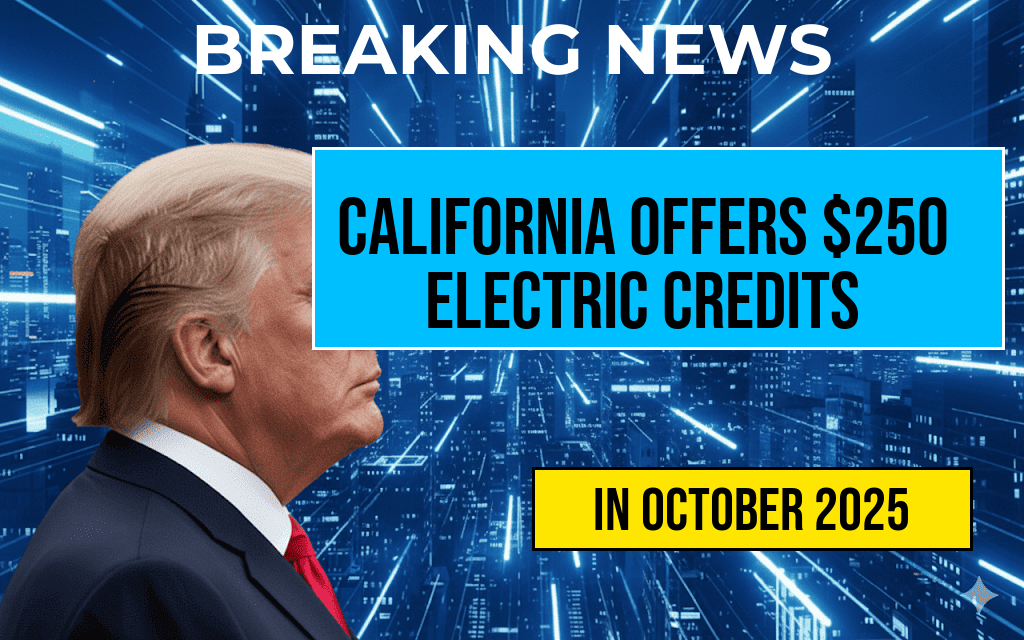California has announced a significant initiative to provide direct financial relief to over 11.5 million households through electric credits, offering up to $250 per household with minimal effort required from residents. This program aims to ease the financial burden of rising energy costs amid ongoing efforts to promote clean energy adoption. Eligible households will receive these payments automatically, bypassing lengthy application processes and reducing administrative hurdles. The initiative reflects California’s broader strategy to support residents during economic challenges while advancing its climate goals by encouraging the use of renewable energy sources.
Details of the Electric Credit Program
The California Department of Community Services and Development (CSD) announced that the new electric credit initiative will distribute direct payments to qualifying households through a streamlined process. The program is designed to provide immediate financial relief to low- and moderate-income households facing high energy bills. Eligible residents will receive their credits as a one-time payment or as a credit applied directly to their utility bills, depending on their utility provider.
Key Features of the Program
- Automatic Eligibility Verification: Residents do not need to submit additional paperwork; eligibility is determined based on existing data from state and utility records.
- Maximum Benefit: Up to $250 per household, with the exact amount depending on household income and size.
- Distribution Method: Payments will be issued via check or direct deposit, and utility companies will automatically apply credits where applicable.
- Coverage Area: The program encompasses nearly all California households that qualify under income criteria, including residents of both urban and rural areas.
Funding and Implementation Timeline
The program is backed by approximately $1 billion in state funds allocated through recent legislation aimed at alleviating cost-of-living pressures. The rollout is expected to begin in the coming weeks, with payments reaching households by late summer. The state anticipates that the automatic nature of the program will facilitate rapid distribution, reducing administrative delays common in traditional aid programs.
Impact on Energy Costs and Climate Goals
By providing direct financial assistance, California aims to reduce the economic strain on households grappling with high energy prices, which have surged due to factors such as global supply chain disruptions and increased demand. The credits also serve as an incentive for residents to adopt energy-efficient appliances and renewable energy systems, aligning with the state’s ambitious climate objectives to achieve carbon neutrality by 2045. The program underscores California’s dual focus on economic resilience and environmental sustainability.
Community and Advocacy Response
Community organizations and advocacy groups have largely welcomed the initiative, emphasizing its potential to deliver swift relief to vulnerable populations. Energy policy experts note that direct payments can be more effective than rebates or tax credits, especially for low-income households less likely to benefit from complex incentive programs.
Public Reception and Future Outlook
Residents have expressed optimism about the ease of receiving aid, with many appreciating the minimal action required on their part. However, some consumer advocates caution that ongoing affordability issues may require additional measures beyond one-time credits. California officials have indicated that this initiative may serve as a model for future targeted relief efforts, especially as the state continues to navigate the economic impacts of energy transition policies.
Comparison with Similar Programs
| State | Benefit Type | Maximum Payment | Distribution Method | Notes |
|---|---|---|---|---|
| California | Direct payments / Utility credits | $250 | Check / Direct deposit / Utility bill credit | Automatic eligibility verification |
| New York | Rebates for energy-efficient appliances | $500 | Rebate check / Utility credit | Requires application submission |
| Massachusetts | Energy bill discounts | Variable | Utility bill credit | Dependent on income and usage |
As other states explore similar relief strategies, California’s approach of automatic, direct payments stands out for its simplicity and immediacy. Experts suggest that such models could influence future federal and state policies aimed at reducing energy costs for vulnerable populations.
For more information about California’s energy policies and assistance programs, visit the California Energy Commission or the California Department of Community Services and Development.
Frequently Asked Questions
What is the purpose of California’s direct payments for electric credits?
The purpose of California’s direct payments is to provide financial relief to households by offering up to $250 in electric credits, helping to offset energy costs and promote energy affordability.
How many households are eligible to receive these electric credit payments?
Over 11.5 million households across California are eligible to receive the direct payments, making this one of the largest energy assistance initiatives in the state.
Is there any required action for households to receive the payments?
No, minimal action is required from households to receive the electric credits. The payments will be automatically distributed to eligible households.
When will the payments be distributed to eligible households?
The distribution timeline has not been specified here, but eligible households can expect to receive the direct payments in the upcoming months as part of California’s initiative to support energy costs.
How will this program impact California residents financially?
This program will provide immediate financial relief by reducing electricity bills and helping households manage energy expenses more effectively, contributing to overall cost savings.

Leave a Reply